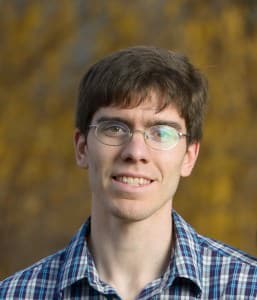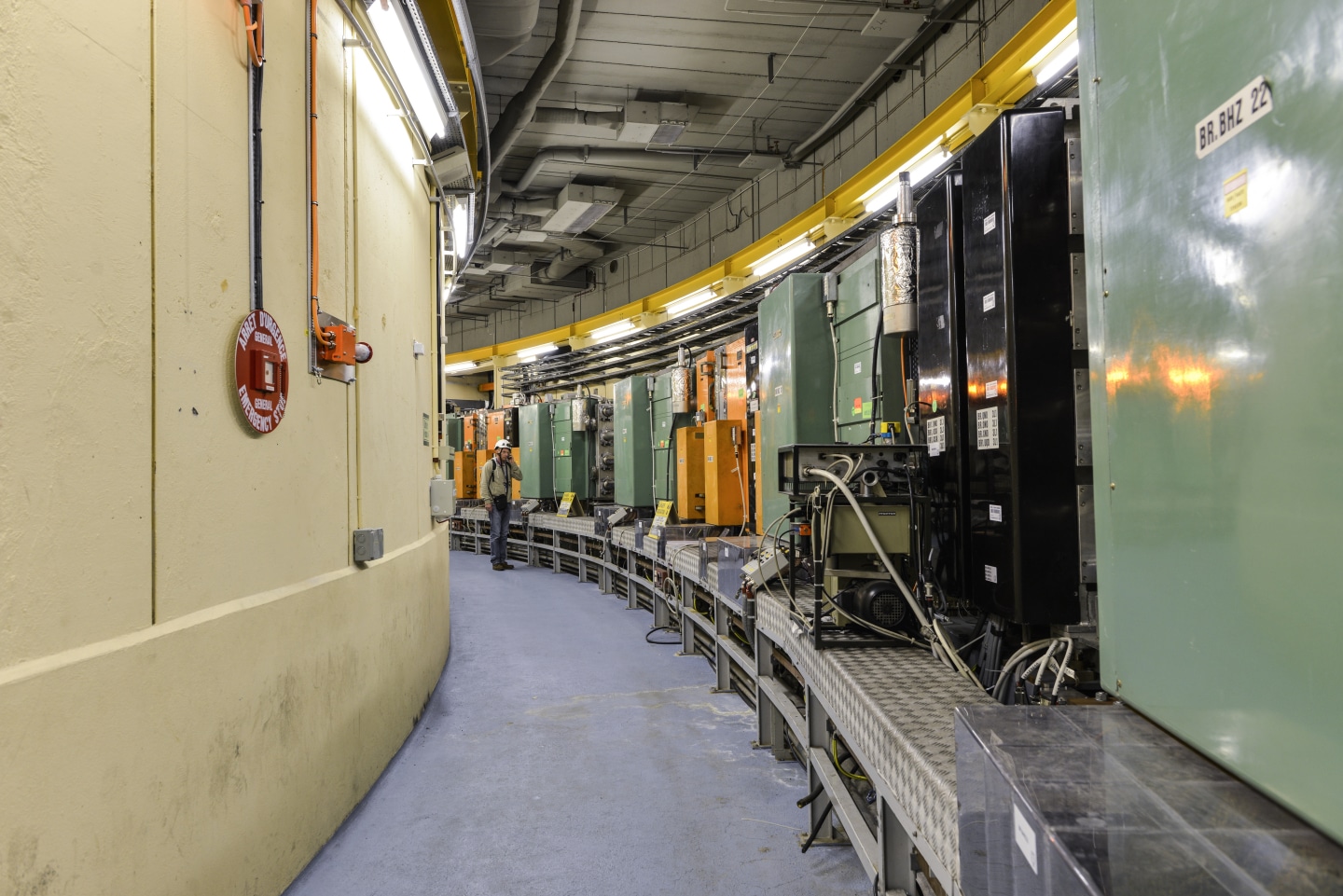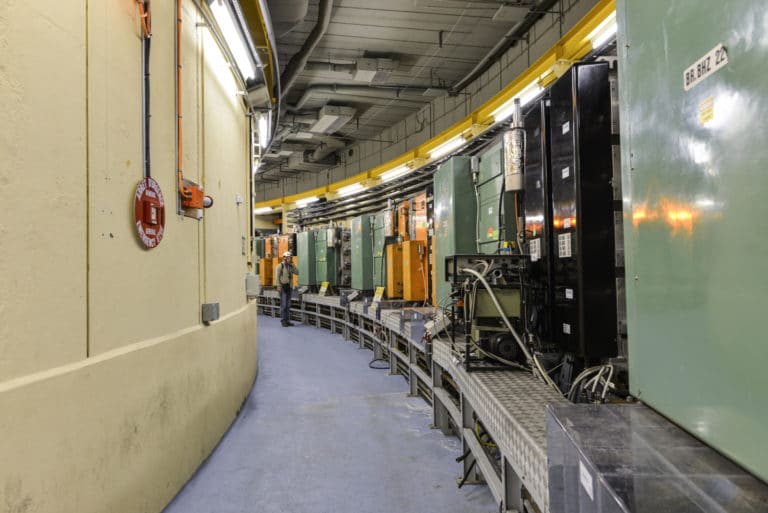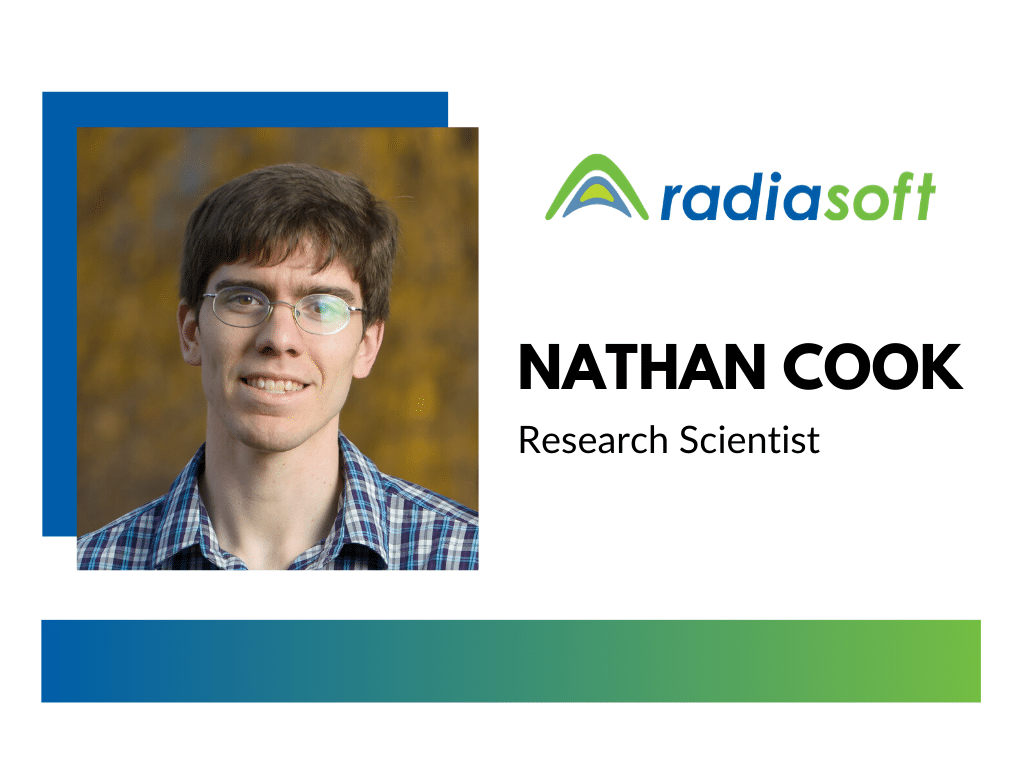Meet Your Research Scientist: Dr. Nathan Cook
Learn about RadiaSoft’s stellar team in our ongoing Q&A series. Today, we speak with Dr. Nathan Cook about his current research, the biggest misconception about his field, and more.

What do you do at RadiaSoft?
First and foremost, I am a research scientist. I spend a good amount of my time studying accelerator and plasma systems through grants provided by the Department of Energy and through customers at National Labs and universities.
Right now, my primary focus is on advanced accelerator concepts technology, which includes plasma accelerators. Those are technologies for accelerating particles over shorter distances to create more compact accelerators. I’m also actively engaged in research on small-scale devices for power generation. I do a lot of work with particle-in-cell and fluid codes to model these kinds of systems for a broad variety of applications.
I am also a group leader, which means I provide support, feedback, and guidance for a number of RadiaSoft scientists. Our group is colloquially known as the applied physics group.
What’s your educational and career background?
I received my undergraduate degree in math and physics from Williams College, then my PhD in physics from Stony Brook University in 2014. There I studied accelerator physics and worked at Brookhaven National Lab. That’s where I was first introduced to accelerators.
After graduating, I was anticipating moving to California, where my wife lived, but I was contacted by Stephen Webb, who’s another RadiaSoft employee, as well as a Stony Brook alum and friend. He encouraged me to apply to RadiaSoft. I did and joined in 2015.
What’s the biggest misconception about your field and why?
There is a tendency to think that accelerator or plasma physicists are only working on large collaborative international projects. That there’s only the LHC, or there’s only some large-scale project to study, and that most of the time we’re working to further this singular project aim. Certainly, that’s not been my experience, nor is it the case at RadiaSoft.
The reality is that there are myriad applications of accelerators, ranging from very very small-scale devices to produce electricity (thermionic converters, for example, are essentially reliant on accelerator technology) to small-scale light sources and detectors. In fact, a variety of applications across industries rely on small teams to produce small devices.
Where did you grow up?
I grew up in Columbia, Maryland, a suburb between Baltimore and Washington. It’s known for being one of the original planned communities.
Before joining RadiaSoft, what’s the strangest or most interesting job you’ve held?
The most interesting job I had was a part-time one in undergrad working for the Williams College website where I wrote about stuff going on around campus. Throughout my high school and early college education I was very interested in journalism—to the point that I considered becoming a journalist in lieu of pursuing science. I did a lot with my high school newspaper; I was editor for two years and did many other programs.
Williams is an interesting place because even though it was a small liberal arts school with a few thousand people in the middle of Massachusetts, they bring in all these artists, performers, and festivals. The cultural and community events were much more diverse and interesting than you’d expect.
Having the opportunity to write about different people, projects, and events helped me learn more about the community at a time that I was feeling very much out of my element.
Who is your favorite scientist from history and why?
This one’s really tough. I’d have to say Tycho Brahe. Partially because I was very interested in astronomy when I first started studying physics. Among astronomers he has a certain reputation because he was such a strange character with a larger-than-life personality.
Brahe was prominent in the late 1500s. This was a time when people still were resistant to the idea of planets orbiting the sun, but they were also starting to observe the motions of heavenly bodies and saw things that flew in the face of preconceived ideas. The Danish government gave Brahe access to an island off the coast of Denmark, which now is part of Sweden, I think. He built a castle, laboratory, and observatory and started doing science with a few other people, including Johannes Kepler. He also threw huge parties and got into a lot of trouble. I mean, he is famous for having lost his nose in a duel.
Yet Brahe still was producing some of the most accurate observations and measurements of the motions of bodies that had ever existed. His work was instrumental in enabling Kepler to form the three laws of planetary motion, which were essentially the foundation for Newtonian gravity. I find it fascinating that this person, who didn’t seem like your standard scientist, contributed so powerfully to the foundational elements of astronomy and basic physics principles in such a weird, tumultuous era.
I named my cat after him, and didn’t realize until later that Cat Tycho has a white nose, so it looks like he’s also wearing a false nose like the real Tycho.
Tell us about one of your current projects.
I’m working on a project called Flashcap, which is intending to model plasma systems for advanced accelerators. It’s very important to the community because it’s been recently demonstrated that by generating a controlled plasma density profile you can improve the quality of electron beams that are interacting with these plasmas by several orders of magnitude, potentially. (Several world records for energy and beam quality have been set by using specific types of structures called capillary discharge plasmas.)
I’m really excited because prior to this work there were very few tools out there to model these systems. It’s an opportunity for us to have a broader impact on the accelerator community by supplying them with a tool that addresses the needs of a really exciting technology. It’s already garnered positive feedback in the international community and from collaborators like Berkeley Lab, DESY, and scientists at the University of Strathclyde.
What is a talent, secret superpower, or fun fact about yourself that people wouldn’t guess?
I won a Kelloggs-sponsored cereal-eating contest in college. Anyone on campus could go to the dining hall and participate. I won. The prize was an Xbox, which was awesome to an undergrad.
The cereal was terrible, though. It was a promotional event, so they were doing market research on new cereals or something. I can best describe it as a cross between Cinnamon Toast Crunch and Frosted Flakes. It was a pain because not only was it overwhelming to eat that kind of cereal in large quantities but you really needed a good amount of milk for it not to hurt your mouth. It made for an extra layer of challenge.
What’s your favorite Slack emoji and why?
My favorite is a custom one called Coffee Slayer. It’s based on a character from a Japanese anime called Goblin Slayer. The character is a great mercenary who just goes around killing goblins because he has a lifelong vendetta against them. He does so with utter tenacity and focus to the point that it’s cliche, almost a meme. He never takes his helmet off, which is another meme.
So, you take this absurd character and put a little espresso cup in his hand and imagine that instead of spending all his time slaying goblins he’s just sitting in a café drinking coffee, which is hilarious. I also love coffee, so I like using it as a status for grinding away at your work while drinking coffee, which is something I think all scientists can appreciate.

What’s something you wish people understood better about RadiaSoft?
What people don’t understand is that we’re in a unique position at RadiaSoft where we can work with so many different people in the field and so many sub-disciplines within the accelerator, beam physics, and energy and nuclear physics communities. It’s very rare for us to work on a single project or a single aim for five years, but it’s commonplace for academia or national labs with long-term R&D.
We have to be a lot more agile and come up to speed on things and make a contribution and then move in a one- to three-year time scale. That, I think, is an underappreciated challenge and a really great and fun aspect of working at RadiaSoft.
Want to learn more about the RadiaSoft team? Visit our team page for full bios.




